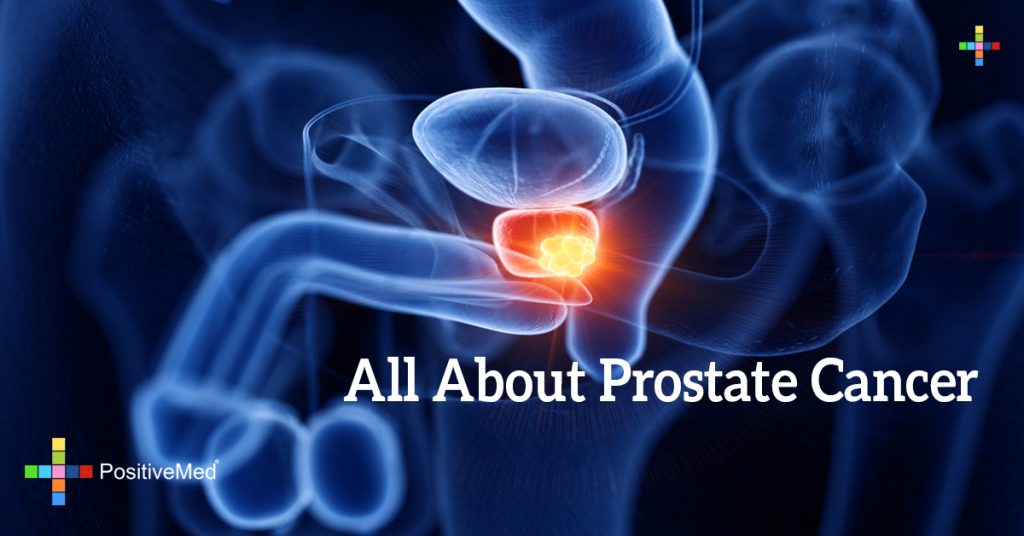
All About Prostate Cancer
BY Positivemed-Team Costa Rica Office
Edited By: Stephanie Dawson
In developed countries prostate cancer is among the top causes of male mortality, only exceeded by lung cancer. Treatment and preventive measures have shown great effectiveness in reducing rates of this malignant disease.
The prostate is a gland in the male reproductive system that has the shape and weight of a walnut. It is located in the pelvis, behind the bladder and anterior to the rectum. The function of the prostate is to be a regulator in the process of draining the urine from the kidneys and to contribute to the creation of seminal liquid and other nutritious substances for maintaining sperm quality.
Cancer is the abnormal and disproportionate growth of cells. According to the characteristics of the cells, their growth rate, and morphology they can be divided into malignant or benign tumors.

Benign tumors are composed of normal cells with self-limited and organized growth (the process of duplication of the cell) In relation to prostate cancer, according to experts it is common in two thirds of total cases. The scientific name of this medical condition is prostatic hyperplasia. Manifestations and symptoms are known as prostatism and are related to the size of the prostate.
Malignant tumors are composed of abnormal cells (generally immature) described as a disproportionate growth of cells, that invade and destroy healthy cells as well. They can expand to other parts of the body trough the blood of the lymphatic system giving rise to new tumors, this is called metastasis.
Prostate cancer starts with some cells that multiply themselves without control until cover most part of the gland.

Common Symptoms of Prostate Cancer
• Urgency to urinate, involuntary loss of urine
• Urge to wake up during night to urinate
• Increased urinary frequency
• Difficulties urinating
• Presence of blood in urine
• Difficulty controlling the bladder
• Pain during urination
• Pain during ejaculation
• Common urinary diseases
• Erectile dysfunction
Symptoms at final stages of the disease:
• Weight loss
• Decreased appetite
• Pain near the back
• Edema or bruises in legs
• Renal failure
Risk factors for prostate cancer
Age is the most important risk factor. It’s likely 42% of the male population over 50 years of age will develop some histological evidence of prostate cancer and a mortality rate of 2.9% for this cause.
Genetics. There might be a high inheritability of this disease if your father or brother had it
Ethnic related. Prostate cancer is more common in Afro-American men than in Chinese or Native Americans in the United States.
Diet. A high fat diet, mixed with high intake of red meat, has been shown to be a risk factor in developing cancer, the same applies to tobacco and alcohol use.
Having a vasectomy is a not a risk factor
Prevention of prostate cancer:
• Learn about super-foods and the importance of a healthy diet based on protective foods like broccoli, tomatoes, oily fish, flaxseed, green tea, and red wine. Quit smoking and abusing alcohol.
• Maintain a healthy lifestyle, regularly practice some form of exercise.
• Multivitamins might be recommended for people without any renal or prostatic condition.
• Always check with your doctor, particularly after you turn 40.
Sources
American Cancer Society (2009). Cancer Facts and Figueres 2009. Atlanta: American Cancer Society.
Zelefsky MJ, et al. (2008). Cancer of the prostate. In VT DeVita Jr et al., eds., Devita, Hellman, and Rosenberg’s Cancer: Principles and Practice of Oncology, 8th ed., vol. 1, pp. 1392-1452. Philadelphia: Lippincott Williams and Wilkins.





